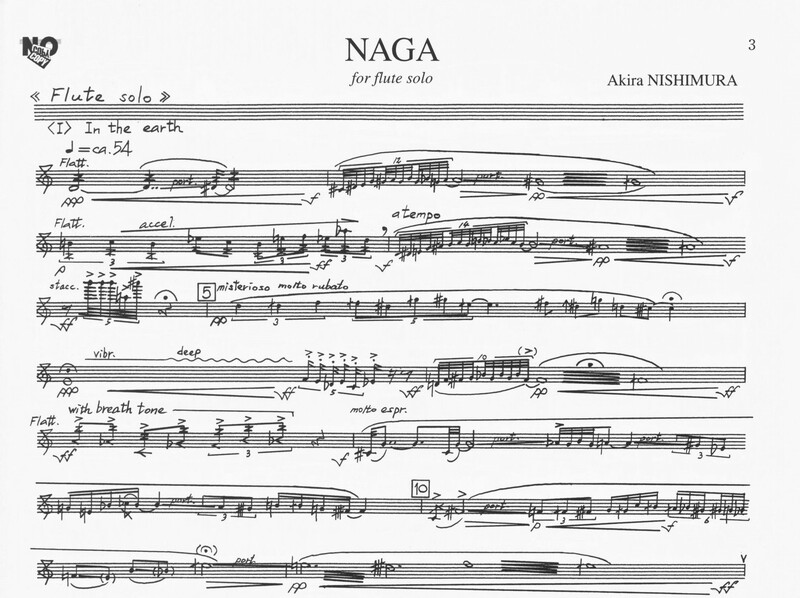Naga
Item
-
Score title
-
Naga
-
Composer
-
Akira Nishimura
-
Program note
-
The ryūteki is a Japanese flute and one of the instruments used in gagaku, classical religious music. It is said that the ryūteki has its origin in ancient China and its sound represents dragon's voice. The melody of the ryūteki freely soars between the sound of the hichiriki, double reed instrument representing earth, and of the sho, free reed instrument representing heavenly light. Although I got the idea for this work from the ryūteki, I didn't intend to describe musically the tone colour of the ryūteki but reflect the concept of it in my work. In other words, the theme of this work is the nature of the dragon, the imaginary sacred creature.
In the ancient Chinese thought the dragon is the God of Water, the embodiment of water in nature. It transforms into a vein in the earth, a great river on the ground, and thundercloud, wind, rain and tornado in the sky. Such images of the sacred dragon strongly reflect characteristics of the naga, the God of Snake and Water, which came from ancient India to China on the arrival of Buddhism. The naga was translated as the king of dragon in China. Afterwards, it connected to old Japanese faith in the God of Snake and became the God of Water and Waterfall. In the Nara period, it was turned into one of the gods of the Hachibusyu, the eight Dharma-defenders.
This piece for the flute solo was inspired by the image of the God of Dragon. The work consists of three parts played without pause: 1 In the Earth, 2 In the Water, and 3 In the Sky. The performance of this piece requires various special techniques for microtones and portamento. Using such sounds by the modern flute that is the most evolved traverse flute, I wanted to produce dragon voices and address the sleeping dragon God of naga.
Akira NISHIMURA
(from the program notes from the premiere)
 Akira Nishimura
Akira Nishimura

